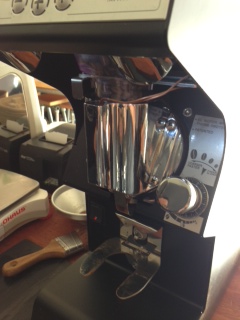Coffee in Ireland in 2014
Sunday Business Post 15th December 2013
In all the years I’ve been involved in coffee in this country I’m not sure I’ve ever seen so much progress in coffee quality as I have in 2013. There are more specialty coffee shops, more specialty roasters and most importantly there are more talented baristas working in the country today than there has ever been. Classes, tastings and “throw downs” are springing up nationwide and at long last there seems to be a public awareness of specialty coffee that just wasn’t there before. I’m really excited about this coming year and here’s a little insight into what to expect in the coming year from the Irish Coffee Scene
Growth of Specialty Shops/Roasters
There was a time when a coffee tour of Dublin would entail 3 or 4 hidden away cafes in the city that you had to look hard to find. Today you could visit any one of 30 cafes and have a really excellent experience. I meet people every week who are looking to do similar and whats more exciting are the plans to improve those that are already there. Cork, Belfast and Galway are also following along nicely which can only make things better for the consumer.
Emergence of the Pseudo-Specialty Shop
Imitation is the highest form of flattery and the last few months have seen the emergence of the pseudo-specialty shop. It looks the same, it sounds the same but unfortunately it doesn’t taste the same. Theres a lot more to specialty coffee than distressed wood and latte art so its important to develop that relationship with your barista so you know what you’re getting in the cup.
Coffee will become more expensive
Well this is only half true. Currently the market price for commodity coffee is sitting scarily close to the $1/lb mark, as low as I’ve ever remember seeing it. This is the sort of coffee that goes into high street blends and instant coffee but I doubt you’ll see those prices falling. The type of coffees you see in the best shops are generally bought by specialty importers and the prices are far in excess of the market price, up to $150/lb in some cases. Leaf rust in South America, global warming as well as the growth of the Asian specialty market means that there are now more people looking to buy specialty grade coffee. This increase in in demand will drive the price of good coffee further upwards. As a demand for quality rises in this country, the €5 coffee is something you will begin to see more of in the coming year.
A new Irish Barista Champion
Having taken a year out this year I find myself looking at this years Irish Barista Championship finals lineup and feeling I’ve dodged a bullet. There has never been a stringer lineup and any one of the 6 competitors is a very worthy champion to represent Ireland at the World Championships in Rimini next year. The finals are in February at Catex and will be contested by Bruno Ferrer (Brother Hubbard), Mark Ashbridge (Established), Vini Arruda (Urbun/Badger & Dodo), Tom Stafford (Vice), Petesy Williams (3fe) and Niall Wynn (Coffee Angel).
Filter Coffee
Espresso will always be king but filter coffee is on the rise. Personally I drink more filter than I do espresso and a lot of baristas I know are the same. The problem for cafe owners has always been the workflow and delivery as it always takes that bit longer to prepare. Today there are probably 7 or 8 places serving filter coffee well in the city, including one place (Indigo & Cloth) that serves only filter, but I’d expect that to at least double in the next 12 months.
Dublin Coffee Festival
September 2014 will see Irelands first coffee festival at the RDS in Ballsbridge. The event will showcase all that is best about the Irish and International coffee scene and also host a range of competitions and demonstrations. The event will also act as a precursor to the World Barista Championships that will be hosted in Dublin in 2016.
Retail Coffee
In our shop in Grand Canal street we sell more coffee beans to our customers than we use in the shop. Ireland is quickly developing a culture of recreational tasting and a coffee hobby is not only delicious and approachable, its also incredibly affordable. In the coming year I’d expect to see your local cafe invest in a wall of shelves for brewers, beans and coffee machines so you can brew it yourself at home too.
Guest Coffees
There was a time not so long ago when every shop in the country served a blend of undisclosed origin but today the best cafes know all about there coffee and where it came from. Expect the coming year to see more and more cafes offering a choice of blends and single origin coffees at a variety of prices. One of the most rewarding things for a coffee lover is to develop an understanding of their own preference and having that choice in a number of cafes is a real win-win.






